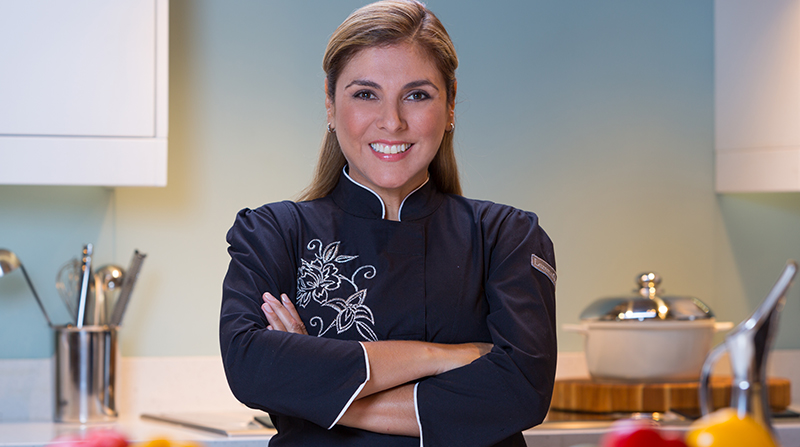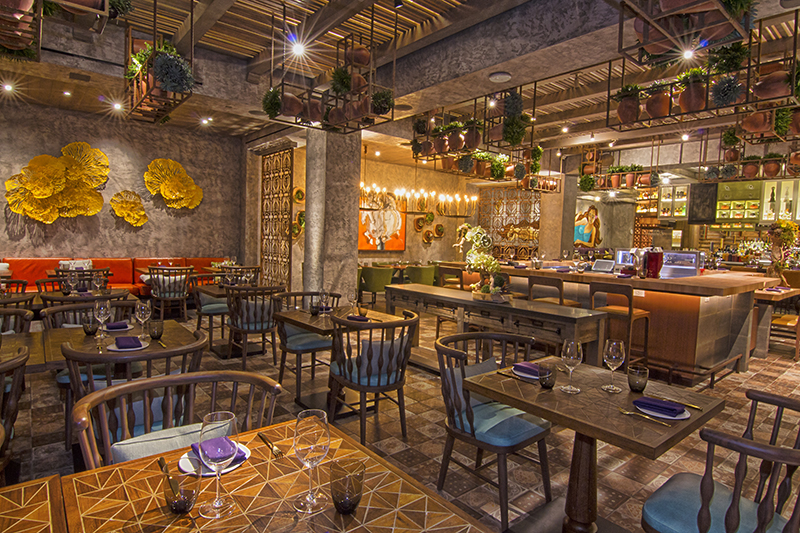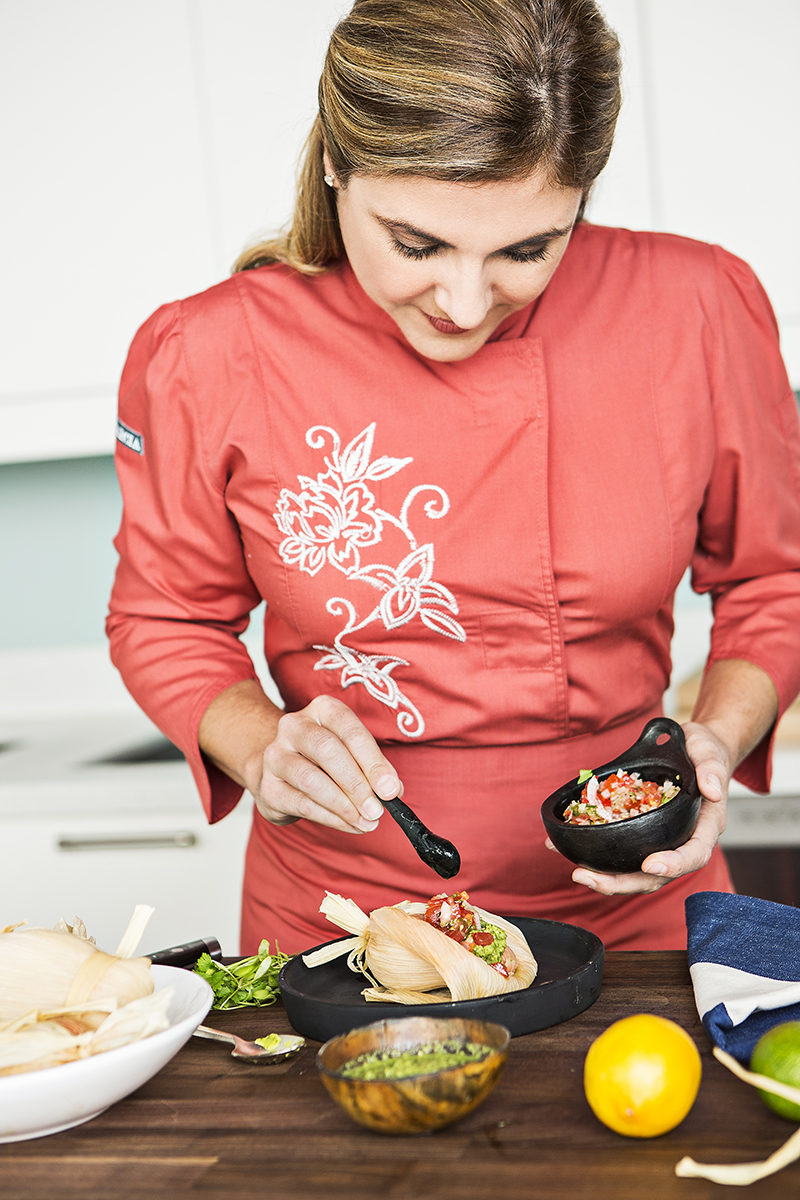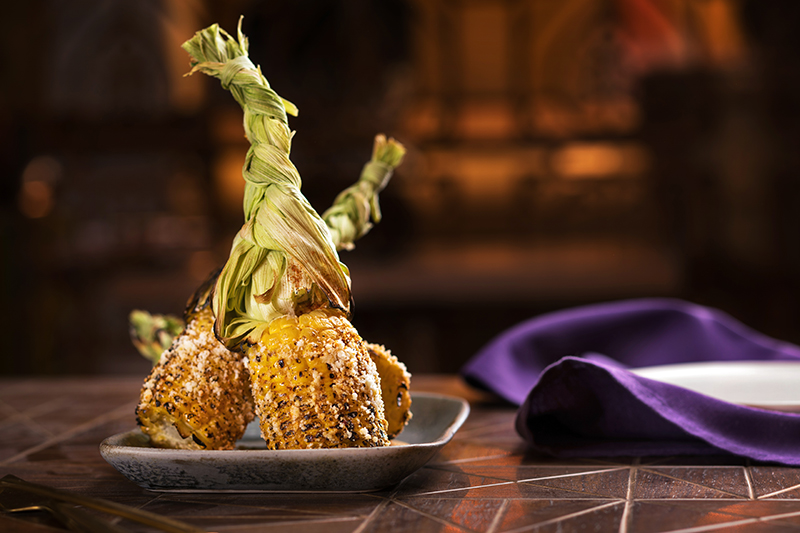

Chef Lorena Garcia. Credit: Lorena Garcia Group
“You have to be good to be in Las Vegas,” says chef Lorena Garcia. “There is no settling for mediocrity and being good enough is not good enough anymore. You have to be excellent, because the competition is tough.”
When Garcia opened Chica at Forbes Travel Guide Four-Star The Venetian in May, she joined an elite group of female celebrity chefs who have restaurants on the Las Vegas Strip. Joining the court of Giada De Laurentiis, Mary Sue Milliken, Susan Feniger and Christina Tosi, Garcia captivates palates both experienced and new with dishes showcasing the flavors of Latin America.
The Venezuelan-born celebrity chef partnered with restaurateur John Kunkel and his company 50 Eggs (his other eatery, Yardbird, is right next door) to bring the dynamic Chica to life. Serving breakfast, brunch, lunch and dinner, the restaurant’s menu is filled with items such as arepas (sweet corn pancakes), huevos rancheros, tacos of every variety, ceviches, braised short rib and Yucatan halibut.
A mother, entrepreneur and trailblazer, Garcia traverses the United States from her home base of Miami, visiting her businesses in Dallas, Atlanta and now Las Vegas. Luckily for us, she found time between stops to talk about Chica, challenges in the kitchen and reinventing Latin cuisine.

Chica. Credit: Linda Evans
How did Chica come to fruition?
It took about two years to come up with the idea, the concept, the menu. And this is really a collaboration of two minds getting together. John [Kunkel] really understands where I come from, my culture and what I want to say.
And at the same time, he brings the experience. He’s a fantastic operator. He knows how to not only run, but to maintain, a successful restaurant of this caliber.
What are some of the challenges that you faced as a woman in such a male-dominated profession and how did you solve them?
Based on my experience, when you’re in the kitchen and you have five cooks that are all men, sometimes they tend to be resistant to work for a woman. But at the same time, that always drove me to lead by example and to know what I’m talking about.
I always say to the people and to the kids that I mentor [that], “You need to know your craft.” You need to have a complete understanding of the business. That’s about preparation, studying, working for the best. I worked for free for the first five years of my career because I wanted to work for the best in order to learn.
What was your first experience in a hotel kitchen?
Wednesday nights, I was a sushi lady, and I would make about 7,500 pieces of sushi for happy hour. I was also the brunch lady. I was making eggs. I did every single line that you can imagine.
I think, as a chef, you need to do it. You need to expose yourself because, in that same sense, you are going to find out what you want to do.

Chef Garcia at Work. Credit: Lorena Garcia Group
What is your favorite position in the kitchen?
At heart, I’m a line cook. I like the fire. I like being in that controlled chaos. When you keep escalating positions in a restaurant, you sometimes lose touch with the prep, the cook, and that is something that I always tried to be in touch with. I don’t like to step away so much.
What has the process been like with this restaurant?
One of the most important things is education. We would like to educate our staff and our cooks about a new style of cuisine that they have never made. Even though we’re strongly influenced in Mexican cuisine, we have Argentinian, Venezuelan, Brazilian, Peruvian [dishes], so it’s an eclectic menu when it comes to the flavors that we use.
It’s been a lot of preparation and training. [It’s] the different ingredients that we use and we bring from Latin America that really makes our menu so special.
How often do you go on a research trip?
I always go to South America — Peru, Brazil, Argentina, Central America — a couple of times a year. Colombia, at least once. I always stay in touch and I’m refining.
I’ve been in this country for almost 30 years, so I consider myself an American, as well. I want to be that translator between the cultures; [serve] something you have never tried before but it’s also accessible for you. I want to make an easier transition between the foods.
How do you surprise your customer while remaining accessible?
We need to give more credit to our customers because I believe that, even though we want to make everything accessible to them, you need to have the menu items they know.
I think they also like to try something new with different ingredients, that they say, “Wow, this is amazing.”
Our Caesar salad is completely [different] than every other Caesar salad. It’s the way that we serve it in my country — fresh watercress, Parmesan croutons, cilantro Caesar dressing. So, that’s what I wanted to bring — the real feeling and senses that you have in my culture, when you come to my country.

Corn Lollipops. Credit: Anthony Mair
Why do you love this profession?
I love transforming the aggressiveness of the kitchen into passion, into love, into commitment. And I love when I walk into the kitchen, everybody is smiling.
Even though we’re in the weeds and everyone’s running around, when you turn around and you have a second, you see that people are happy — that they’re passionate about what they’re doing because they’re making something new.
What was your first inspiration as a kid that prompted you into this career?
In my house, my mother is a fantastic cook. She doesn’t like to cook but she’s a good one.
How have you modified classic Latin American cuisine?
It’s paying attention to the details. That’s one of the challenges of Latin cuisine. When you have the perception that everything is fried or everything is going to be on a tortilla, how are we going to upscale it and really bring something special?
I think one of the biggest challenges being here in Las Vegas is how are we going to maintain the integrity of our culture, our menu, our ingredients, and also be approachable with food that you’re going to feel comfortable with.
